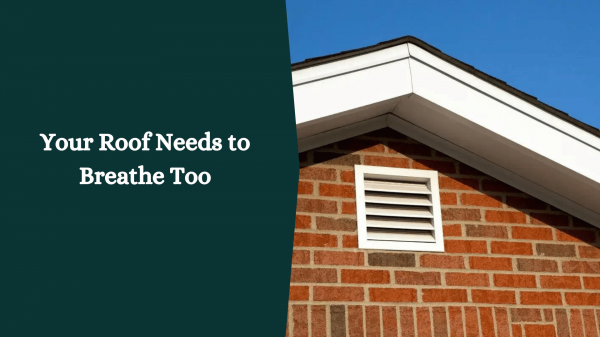Are you planning a new roofing project? Don’t forget the ventilation. Your roof needs to breathe too! With this article from Louisiana Roof Crafters, we will keep give you all the details on your roofing ventilation system.
Hot Air Rises
You probably learned that hot air rises. In order to lift hundreds of pounds of weight off the ground, hot air balloons harness the rising force of lighter, heated air. Since heated air rises, it shouldn’t come as a surprise to learn that it will also try to reach the highest point of any building. However, if the attic and roof aren’t ventilated, the subsequent buildup of heat can cause the following problems:

Harder to Cool Your Home in the Summer
You can expect your attic to become hotter as your roof becomes hotter due to sun exposure. You’ll have to run your air conditioning more frequently and for longer, resulting in higher energy bills and more significant wear-and-tear on your unit. There is simply no way to escape trapped heat without proper ventilation.
Ice Dam Formation in the Winter
In winter weather, capturing warm air can help reduce some of your interior heating needs; indeed, it can be helpful to reduce the need to heat your resident during the coldest months. However, unvented roofs have negative impacts in the winter, too. The liquid from melted snow or ice can quickly refreeze on and around your roof overhangs when the roof is warmed, forming dangerous and damaging ice dams. In order to prevent roof ice dams from forming, it is essential to have the proper roof ventilation.
Potential Interior Condensation Issues
As a result of poor insulation and inadequate venting, some roofing materials are susceptible to conduction cooling, commonly known as “sweating.” This condensation can breed unhealthy mold and mildew, destroying roof infrastructure. Aside from this, things like washing, cooking, and bathing generate ample moisture within your interior living space since there is no way for this moisture to escape.
Your Roof Needs to Breathe Too
In order to keep your roof cooler and drier, you must have proper attic ventilation. Make sure that your roof ventilation plan includes a well-designed ventilation system. Ensure fresh air can enter from below, and hot air can escape above by adequately balancing the intake and exhaust vents.
The Right Approach to Roof Ventilation
The most common roof ventilation systems are designed with a static ventilation principle, although you can add forced-air fans to help move air through your attic. Natural airflow is the basis of static ventilation since it doesn’t require forced airflow. Heat and moisture are transferred through your attic and out of your roof through a system of installed vents by rising warm air. Maintaining a balance between intake and exhaust vents is the key. Adding an exhaust vent is only enough to ensure proper airflow if there are equally matched intake vents. In order to have a successful roof ventilation system, balance, and flow are essential. Here are just a few types of vents that can be used:
Ridge Vents
Ridge vents are commonly used in many types of roofing systems. You can install vents where the angles meet at the top, and you can also consider including ridge cap flashing, depending on the type of roofing material you choose. Large volumes of warm, moist air can escape to the exterior through the ridge venting design.
Intake Vents
It is important to note that more than ridge vents are needed to provide roof ventilation. This is why soffit vents or drip edge vents are commonly installed on the lower edges of roofs. Fresh air is naturally drawn into the system as hot air rises in the attic, allowing more consistent, constant airflow. If you want your ridge vents to function correctly, include as many intake vents as are needed to match the required volume of air outflow.
Gable Vents
There are sometimes gable vents installed nearby the peak of the side gable areas, which can help with ventilation or exhaust. Adding gable vents to your roof won’t substitute for a balanced ridge-and-eave ventilation system, but you can add additional ventilation where needed. A gable vent adds aesthetic value to the exterior of a roof, which is another reason why many homeowners value them.
Why LA RC Is Your Best Choice for Both Roofing and Proper Roof Ventilation Installation
You must always account for roof ventilation when you install a roof for your home or other roofed building, regardless of the type of roofing material you select. A well-ventilated roof is essential if you’ve got one overhead.
If you live in our Louisiana or Mississippi service areas, you can count on the pros at Louisiana Roof Crafters for this kind of assistance. There is no better roof installer than LA RC, and we are also experts at designing and installing optimal ventilation for roof replacements.
Call Louisiana Roof Crafters at 225-238-6396 for more information. We service areas in Baton Rouge, Denham Springs, Hammond, Covington, Mandeville, Slidell, and New Orleans, LA.




